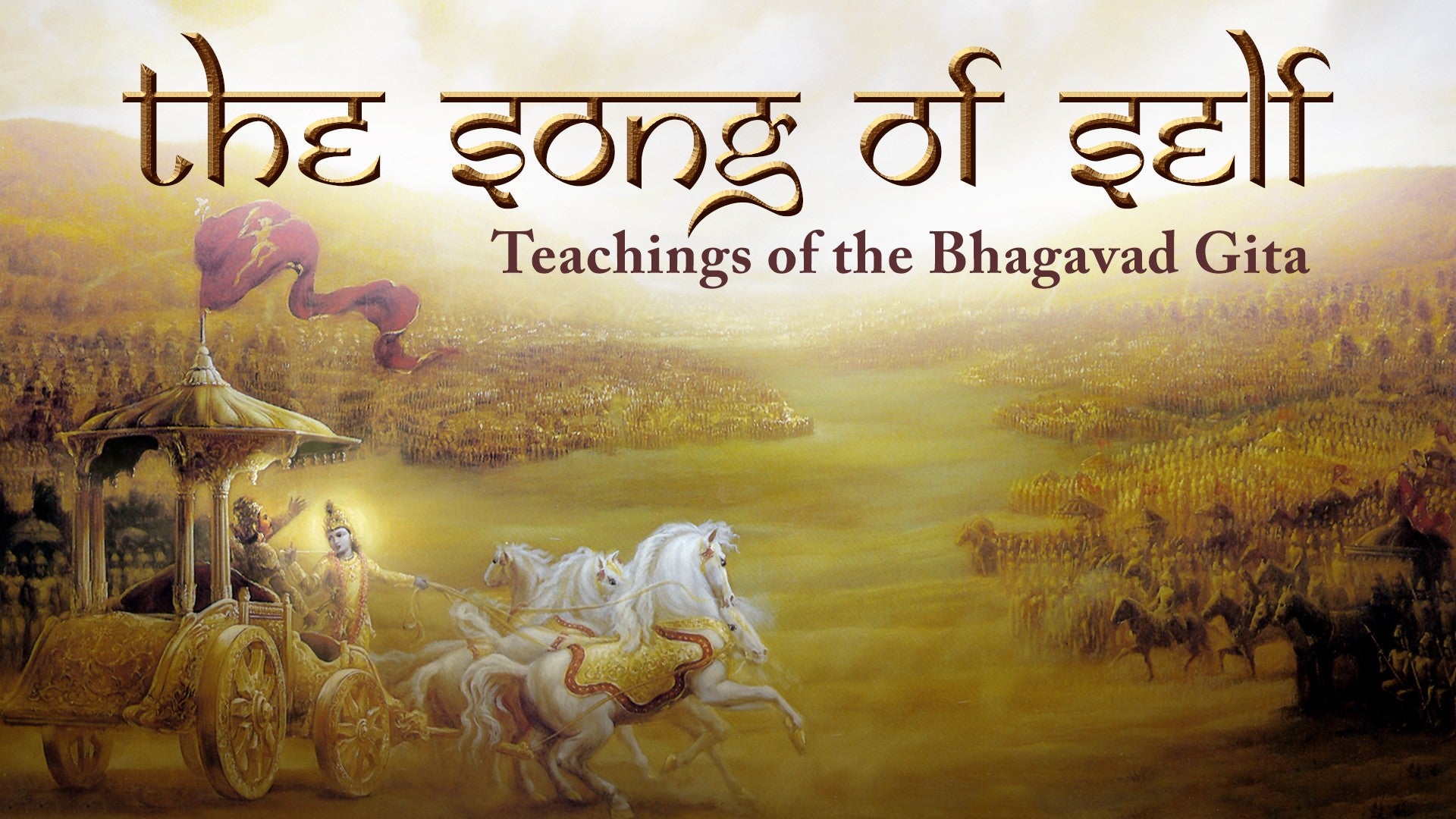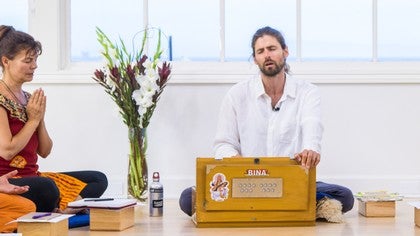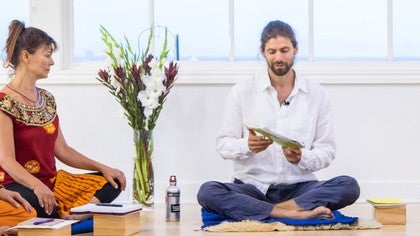Description
We have attached a PDF of the chant so that you can follow along with us.
About This Video
Transcript
Read Full Transcript
So as we're going to be studying together as a group, what I'd like to do to begin is to sing a song to Ganesha together. And I'd also like to mention that this is kind of relevant, or I think it's relevant, even if we're studying alone. Because yoga, one of the very beautiful things about it, is considered the practical school of Indian philosophy. And one of the premises of yoga is that if we work very skillfully with all of the comings and goings, the duality of life, we can actually access a state of integration or unity, the underlying unity. And so yoga recognises that as a human being, it's altogether normal to experience hot and cold pleasure pain, these pairs of opposites. And it's also normal to feel like we have different parts. Maybe one part of ourselves feels, for example, like, why don't I go for a walk outside? Another part feels like, I'd prefer to stay indoors right now. Maybe one of our senses feels like, oh, I'd like to go and have some food. Another of our senses says, oh, no, I'd really rather listen to this beautiful symphony, or the birds singing outside, for example. So we can experience this kind of compartmentalisation. And yoga suggests that this is one of our kind of challenges, or it's part of the fun of the game of a human life, is that different powers that are resident within us, they can sometimes feel that they're not quite working all as one. They're not quite all in sync. And so we're going to start with a song to Ganesha. Now, this archetype called Ganesha is a very interesting archetype. And we could, and I often like to do this, we could speak at great length and tell beautiful stories about how he got his name and what he really symbolised. But very briefly, Ganar means group, and also a member of a group. It comes from the Sanskrit root, which means to count or to enumerate the members of a group. Isha means the Lord, or in other words, one who's truly qualified to be the leader of the group and unify the group. So Ganesha, one way we can consider it is it's the energy of yoga. It's the energy that unifies, that brings things together. So we're going to sing a fairly simple chant. First word is Ganesha. Second word, Sharanam. And Sharanam, it means refuge or shelter or protection. So basically, we take refuge in the energy of unification. We take refuge in the energy that invites harmony. So when we study, if we want to get the most out of the time we study, it's helpful if we can bring all parts of ourselves into that study. So it's not like one part of ourselves is going to just hang back and think about the shopping list and everything else we've got to do later. We're going to give ourselves permission to fully engage with the teaching. And so when we sing to Ganesha, it's just an opportunity to kind of tune into that. Let me do this with every part of myself.
And this is the same for any yogic practice. It's the idea that the practice is just intended or designed to facilitate that state of integrated oneness. So we'll sing Ganesha Sharanam, Sharanam Ganesha, and then we'll also sing Aungan Ganapataye Namaha. So Aum, Gom, Ganapataye, Ganapataye, Namaha. However, when we sing, because we have this G sound in Gung and Ganapataye, the closing M sound becomes like an Ng, so we can say it more easily. So it's Aum, Gom, Ganapataye Namaha. But when we put it together, it becomes Aungan Ganapataye Namaha. So it's easier to pronounce. And what does this mean? So Namaha. Namaha is basically a prostration to bow. But what does that mean? So I think Namaha really means to give oneself to. So to give oneself, Ganapataye means to Ganapati. And Ganapati is synonymous with Ganesha. Ganapati, Ganashe, same meaning. Pati also means the Lord, the sovereign, the one who can lead, who can bring together. So Aungan Ganapataye Namaha, I offer myself to Ganapati to that capacity I have within to bring all of my parts, all the members of this group together. Now you might have noticed that in the chant, there's one word that's quite similar to a word in the English language, Aungan Ganapataye Namaha. Gan, yeah? So the English word Gan, it comes from the Sanskrit, a group. So basically Aungan Ganapataye Namaha, I'd like to invite all the members of my gang that live in this territory to come together. And I'm going to kind of channel or offer my intention, my focus, my energy in such a way that I'm inviting that integration, that cohesion amongst all the members. Okay? So we're going to sing this one with the harmonium. So feel free to join in. We'll start off called in response. I always like to sing nice and loud, open up the lungs, open up the voice. And also as we sing, you can also pay attention. How does it feel? So we'll start with Aum together three times and then I'll start playing the harmony and we'll continue with the song. Aum. Aum.
Aum. Aum. Aum. Aum. Aum.
Aum. Aum. Aum. Aum. Aum.
Aum. Aum. Aum. Aum. Aum.
Aum. Aum. Aum. Aum. Aum.
Aum. Aum. Aum. Aum. Aum.
Aum.
The Song of Self: Let's Begin
Comments
You need to be a subscriber to post a comment.
Please Log In or Create an Account to start your free trial.













